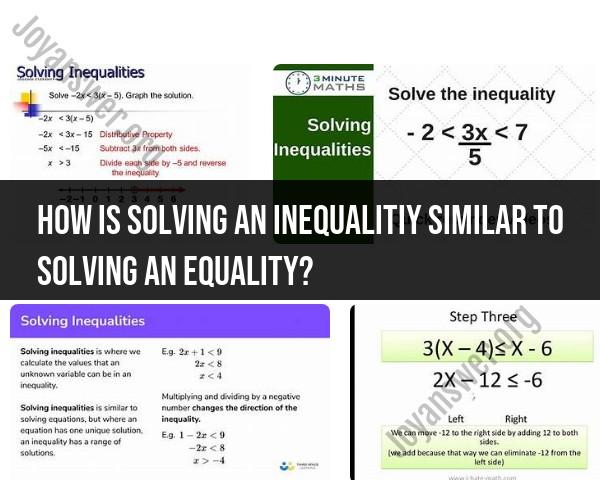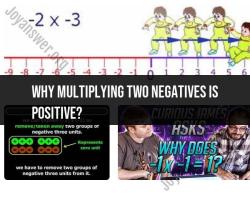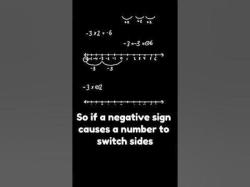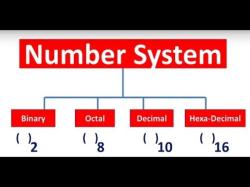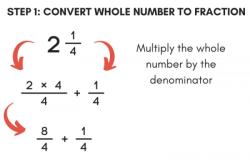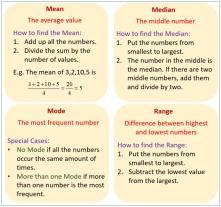How is solving an inequalitiy similar to solving an equality?
Solving inequalities and solving equations in mathematics share several similarities, as both involve finding values for variables that make a statement true. Here are the key similarities between solving inequalities and solving equations:
Isolating Variables: In both cases, the goal is to isolate the variable of interest on one side of the equation or inequality. This involves performing various algebraic operations to manipulate the expression and simplify it.
Use of Operations: Similar mathematical operations, such as addition, subtraction, multiplication, and division, are employed in both processes to transform the equation or inequality. The goal is to perform these operations on both sides to maintain equality (in equations) or maintain the inequality's direction (in inequalities).
Equivalent Solutions: The solutions to both equations and inequalities are values for the variable(s) that make the statement true. In equations, a solution satisfies the equality, while in inequalities, a solution satisfies the inequality. These solutions are often expressed as a range of values (for inequalities) or as a single value (for equations).
Graphical Representation: Both equations and inequalities can be graphically represented on a coordinate plane. Solving them may involve finding the points of intersection (for equations) or shading regions (for inequalities) to represent the solutions.
Testing Solutions: In both cases, you can verify the solutions you find by substituting them back into the original equation or inequality. If the substituted value makes the statement true, it is a valid solution.
Infinite Solutions: Both equations and inequalities can have infinite solutions. In equations, this occurs when the equation is true for all real numbers. In inequalities, it happens when the inequality is true for a range of values, such as .
Despite these similarities, there is one fundamental difference: solving equations typically results in a specific value or a finite set of values that satisfy the equation, while solving inequalities often results in a range of values (a set of values that satisfy the inequality). The direction of the inequality also plays a crucial role in defining the solution set.
Commonalities between solving inequalities and solving equations
Solving inequalities and solving equations are both mathematical processes that involve finding the values of variables that satisfy certain conditions.
Here are some commonalities between solving inequalities and solving equations:
- Both inequalities and equations can be solved using the same basic mathematical operations, such as addition, subtraction, multiplication, and division.
- Both inequalities and equations can be solved by isolating the variable on one side of the equation or inequality sign.
- Both inequalities and equations can have multiple solutions, one solution, or no solution.
Mathematical principles shared by equation and inequality solutions
The following mathematical principles are shared by equation and inequality solutions:
- The distributive property of multiplication: This property states that multiplying a sum by a number is the same as multiplying each term in the sum by the number. This property can be used to simplify inequalities and equations.
- The associative property of addition and multiplication: These properties state that the order in which numbers are added or multiplied does not affect the result. These properties can be used to simplify inequalities and equations.
- The identity property of addition and multiplication: These properties state that adding zero to a number or multiplying a number by one does not change the number. These properties can be used to simplify inequalities and equations.
Identifying key differences and nuances in solving equations and inequalities
One of the key differences between solving inequalities and solving equations is that inequalities have a direction sign, such as <, >, ≤, or ≥. This direction sign indicates the relationship between the two sides of the inequality.
Another key difference between solving inequalities and solving equations is that inequalities can have multiple solutions, one solution, or no solution. For example, the inequality x > 2 has infinitely many solutions, while the inequality x > x + 1 has no solution.
How proficiency in equation solving can aid in inequality solving
Proficiency in equation solving can aid in inequality solving in a number of ways. First, a good understanding of the basic mathematical operations is essential for solving both inequalities and equations. Second, the ability to isolate the variable on one side of the equation or inequality sign is also essential for solving both inequalities and equations.
Finally, the ability to understand and apply mathematical principles, such as the distributive property of multiplication, the associative property of addition and multiplication, and the identity property of addition and multiplication, is also important for solving both inequalities and equations.
Cross-application of problem-solving techniques in equations and inequalities
Many of the problem-solving techniques used to solve equations can also be used to solve inequalities. For example, the following problem-solving techniques can be used to solve both inequalities and equations:
- Factoring: Factoring can be used to simplify both inequalities and equations.
- Completing the square: Completing the square can be used to solve both inequalities and equations that are in quadratic form.
- Using the quadratic formula: The quadratic formula can be used to solve both inequalities and equations that are in quadratic form.
Overall, solving inequalities and solving equations are both important mathematical skills. Proficiency in equation solving can aid in inequality solving, and many of the problem-solving techniques used to solve equations can also be used to solve inequalities.
